Student Work
All photos in this exhibit by Sumeet Kulkarni.
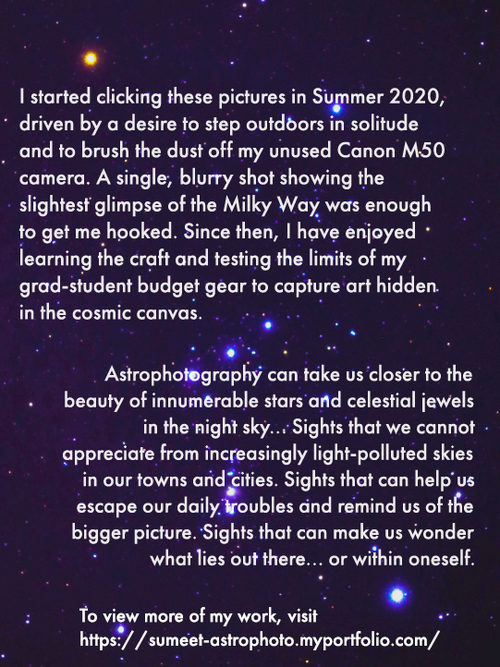
Link to Sumeet Kulkarni's Astrophotography Website
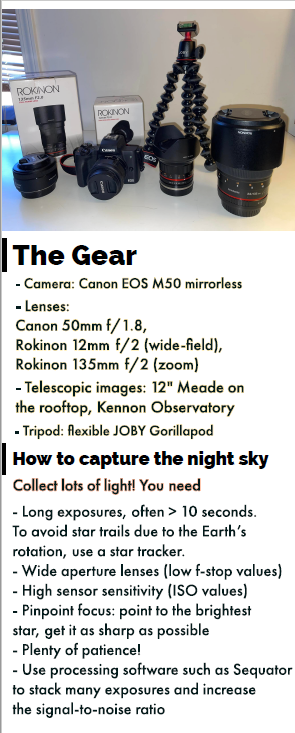
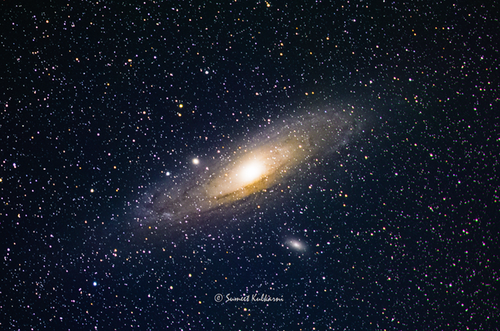
ANDROMEDA GALAXY
2.5 million light years away. Our neighboring galaxy: the furthest object visible to the naked eye, and the oldest light collected by my camera. This is how the Andromeda Galaxy looked like at the beginning of the Stone Age.
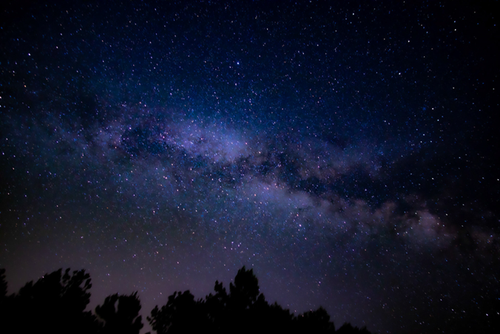
THE MILKY WAY CORE
A densely populated star field in the direction towards the core of our galaxy, with two jewels, the Lagoon nebula (top right) and the bi-colored Trifid nebula to its left. One can observe numerous open star clusters, white regions full of stars, and darker areas of interstellar gas and dust.
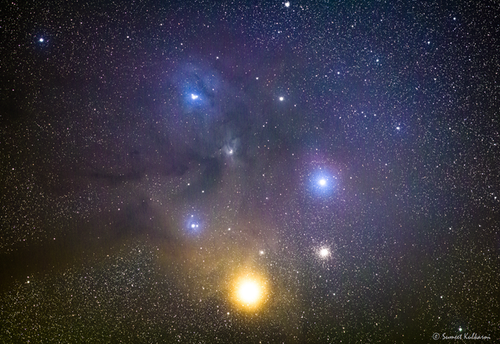
RHO OPHIUCHI COMPLEX
450 light years away. The fascinating starfield around the super-red giant star Antares, (Scorpio’s eye). To its right is M4, a globular cluster. The dark voids on the left and above are gas clouds which absorb light and prevent us from seeing stars behind it. The gas clouds form a cradle of new star formation.
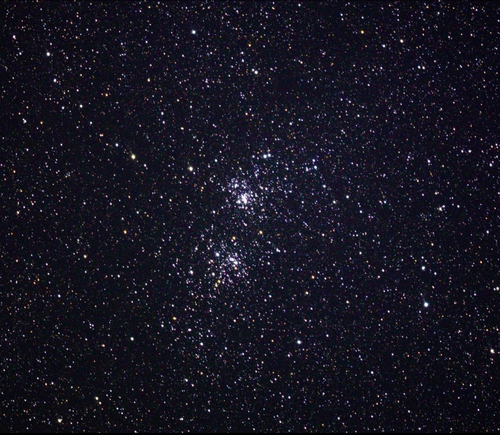
PERSEUS DOUBLE CLUSTER
7500 light years away. The stars in this cluster are very far, in an adjacent arm of our spiral Milky Way. All the stars in the background are from our own arm. The fact that the distant stars in the double cluster look quite like stars much closer to us implies that they are Supergiant stars, up to a thousand times bigger than the Sun!
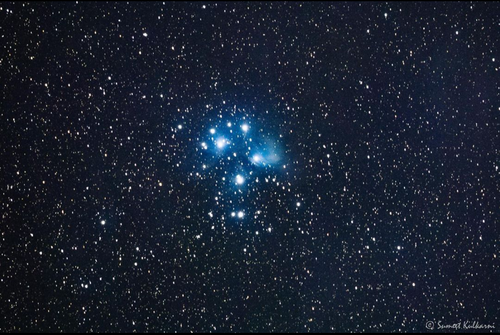
THE PLEIADES
450 light years away. Also known as The Seven Sisters, Subaru (Japanese), and Kritika (Hindi), the Pleiades is the largest and most easily identifiable star cluster in the Northern skies. Seven hot and luminous stars are visible to the naked eye, while the cluster includes over 800 stars. The nebulosity around the seven sisters is likely a dust cloud in the interstellar medium through which they are passing.
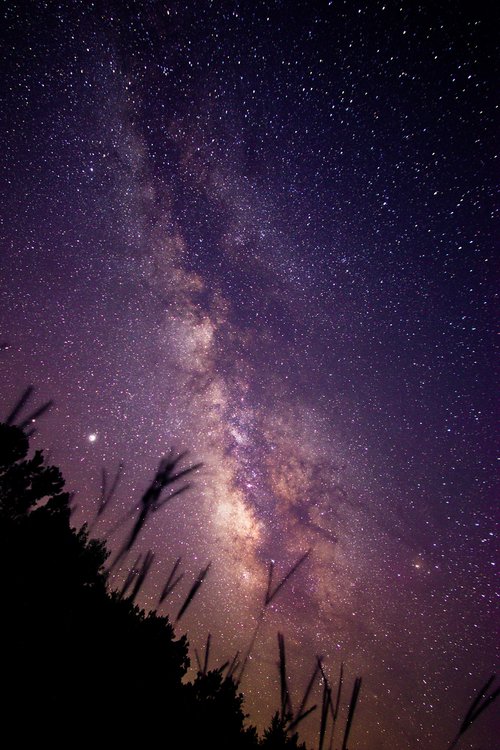
THE MILKY WAY
The wispy white band of our galaxy crosses overhead in the late Summer months.
The bright core of our galaxy, interspersed with interstellar dust clouds is seen here from the University of Mississippi Astronomy Dark Site.

The same view as seen looking away from the relatively dimly-lit neighboring town of Taylor, MS.
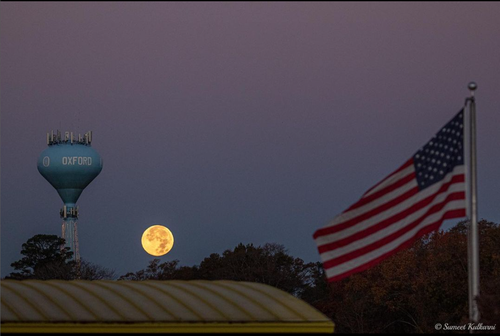
The Full Moon sets behind the Oxford, MS water tower.
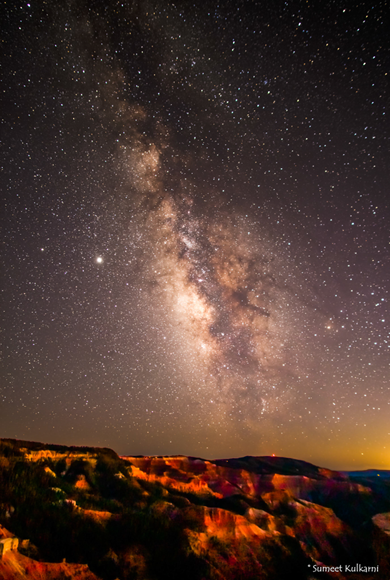
THE MILKY WAY FLOWS INTO A CANYON
The Milky Way seen from the dark skies of Cedar Breaks National Monument, Utah, a designated International Dark Sky Park.
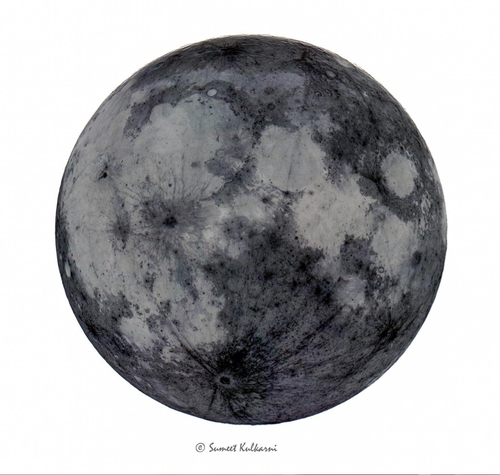
THE CHARCOAL MOON
Inverting the Moon highlights some great surface features, like crater rays: radial streaks formed by ejecta flying out from a crater impact. Featured most prominently here are ones around large craters: Copernicus (center) and Tycho (right)
Additional Reading on Light Pollution from the International Dark-Sky Association:
Follow Sumeet Kulkarni on Instagram: @the.sumeetsonian
